Review for Grave Of The Fireflies - Double Play: The Studio Ghibli Collection
Introduction
It’s as if Studiocanal are filling an ark with Ghibli goodness, as the HD movies keep coming two by two. When these films come up for review, I act on impulse as soon as the review discs are solicited, and on occasion to my chagrin, I even pre-empt the press announcements. But these are films that everyone should see, and there’s certainly none of that ‘Japanese cartoon’ stigma that still lingers on other anime. Once again I didn’t think twice before requesting review discs for July’s Ghibli releases, and it’s only afterwards that I paused for thought. A week or so later, when Kiki’s Delivery Service arrived by itself, I actually gave a sigh of relief, thinking I had dodged a bullet. That wasn’t the case though, as Grave of the Fireflies showed up a couple of days later and my heart sank. I would have to review this film after all. That isn’t a reflection on the film. After all, Grave of the Fireflies may just be the most important film in the Ghibli canon, its high quality is evident, its storytelling is peerless, and that story is compulsive if daunting viewing. Last night I watched Grave of the Fireflies for the second time in my life, following a late night TV showing several years ago, and even though I knew full well what was coming, last night again, I sobbed like a child.
Set during the closing years of World War II, Grave of the Fireflies tells in flashback the story of brother and sister, Seita and Setsuko. Their father is off fighting in the navy, and they live at home with their mother. But as the Allied Forces move towards Japan in the endgame of the war, the air raids mount, and it’s during one such air raid that their home is destroyed, and their mother badly injured. They are welcomed by their aunt’s family, and move into her home, but as the war continues, rationing increases, and privation mounts, that welcome turns to resentment. Seita and Setsuko feel they have no other choice than to leave and fend for themselves. Living in a bomb shelter seems like a grand adventure to begin with, but soon the reality of their situation sets in.
Picture
Grave of the Fireflies gets a 1.85:1 widescreen transfer at 1080p resolution. The image is clear and sharp throughout, a treat on the high resolution format. Colours are strong, and detail levels are excellent, and there is absolutely no sign of compression or the rare digital banding that can on occasion still blight anime in HD. There is a light level of grain throughout and even a little wobble indicative of the film source. Occasionally mention is made on some forums of DNR being applied to these Studiocanal Ghibli releases, as well as the Madman discs the transfers are usually sourced from, but other than a flashback scene with the siblings’ father that seemed a little flat, I don’t feel that DNR has been applied excessively to Grave of the Fireflies.
The film comes across a treat, and dating from the late eighties it is a purely paint and cel endeavour, with no CGI to enhance things. The hand created nature of the film results in a movie that is warm and organic, yet the world design is rich in detail and vibrant in colour, while the character designs are pretty much generic Ghibli style, but with a greater degree of realism to them. The animation is fluid and energetic, and there are no moments in the film that are unrealistically still.
Sound
You have the choice between uncompressed PCM 2.0 English and Japanese, with optional translated subtitles. I went with the original language track, and found it to be a very front focused affair, not too dynamic with its stereo. The audio is clear, bringing across the dialogue without issue. The film’s music comes across with richness and fidelity, while the film’s more dramatic moments are adequately represented. The subtitles are accurately timed and are free of error. The original language track is preferable as children of the appropriate ages were cast in the main roles, offering a degree of veracity that isn’t quite as accessible from the English dub, which has adults in the roles. I’m not familiar with the dub, but judging by the extra end credits scroll, this release has the original Central Park Media dub to it, not the recent Sentai Filmworks version that was released on the US Blu-ray.
Extras
Grave of the Fireflies is released as is the rest of the Ghibli Collection from Studiocanal, as a Blu-ray DVD combo release. I only received the Blu-ray component for review, and cannot comment on the DVD.
The Blu-ray presents its content with a nice simple animated menu.
You have the option of watching the film with picture-in picture storyboards, which have the storyboard image in the upper left hand corner of the screen during playback. I have to say that I actually prefer the DVD multi-angle approach to storyboards, which usually offer the chance to see them full-screen.
The interview with Isao Takahata, director of Grave of the Fireflies lasts just under 18 minutes, and he talks about his approach to the film, the process of making it, and the audience reception.
The Japanese Release Promo – Featuring Interview with Director Isao Takahata and Writer Akiyuki Nosaka lasts about 6½ minutes and they promote the film with a quick look behind the scenes.
The Historical Perspective Documentary lasts 12½ minutes and the historians analyse the film with respect to the policy of air raids and bombing civilian targets during World War II, specifically the air raids and firebombing of Japanese cities.
There is also a useful interview with Roger Ebert that lasts 12 minutes, in which he looks at Grave of the Fireflies and puts it into context with anime in general.
There are two deleted scene storyboards which run to just over 2 minutes, while there are some 11 minutes of Bonus Storyboards, 10 in total.
All except the Deleted Scene Storyboards (1080p) are presented in 576i SD resolution.
Finally there are trailers for other Studiocanal Ghibli product, From Up On Poppy Hill, Ponyo, and Arrietty all in 1080p, as well as the trailer for Grave of the Fireflies (1080i).
Conclusion
This is unlike any other film in the Ghibli canon, and if you’re expecting the light and fluffy fairy tales that Hayao Miyazaki is renowned for, then you’ll certainly have your eyes opened with this. On the other hand, if you’re expecting the quirky and off-beat anime that Isao Takahata has created for Ghibli, like My Neighbours the Yamadas and Pom Poko, again you’ll be set back on your heels. Grave of the Fireflies is a serious, hard hitting anti-war message, told through the perspective of two children, and as such is something of a departure for Ghibli. It most likely will remain the least watched of your Ghibli collection, the very thought of watching it again will give you pause, yet it is their most important film. It has a place in animation history, a message that is ever-important, and the way that it tells its story is compelling and absorbing. Grave of the Fireflies obviously isn’t a film that you own for fun, but it is a film that you own for its significance.
Grave of the Fireflies really isn’t a film that can be told in live-action (although there has been a live action adaptation). To tell a story as bleak as this, about children trying to survive in a war, as Roger Ebert says in his piece in the extras, the fact of children in such a stressful situation will obscure the story that is being told. Animation introduces a distance from the reality of the story that allows for the viewer to be drawn into it. It’s a comparatively gentle introduction to a horrific situation. Live action anti-war polemics are really just that, polemic. You get the horror of war, and you get the anti-war message delivered in an unsubtle way, so the viewer reaction is visceral, rather than emotional.
Grave of the Fireflies avoids this by telling the story from the viewpoints of children. Also while the story is set in Japan at the end of the Second World War, the fact that children are the protagonists means that it is easier to draw the connection to any war. It could be London during the Blitz, it could be Dresden, it could be Afghanistan, or it could be Syria. It’s really about the innocents on either side being made to suffer for the political aspirations of powers beyond their reach, or even understanding. Siblings Seita and Setsuko are just normal children, growing up as children do, living with their mother in a Japanese town, with their father absent due to military service. When the firebombing destroys their home, and separates them from their mother, the film follows them as they try to survive in a Japan that is quickly deteriorating as the war comes to a close.
It’s not a comfortable situation, and the film’s inevitable downward spiral is signposted with the first scene. You know full well what will happen when the film starts, yet even that spoiler doesn’t prepare you, or steel you for the reality that happens. What makes Grave of the Fireflies so powerful, so affecting, is that it isn’t a relentless downward spiral. Seen from the point of view of children, 14 year old Seita and particularly 5 year old Setsuko, there is no loss of innocence. They remain children throughout, and when bad things happen, they feel fear, they grieve, and they weep. But once the bad things end, they adapt to their new situation, and they return to the business of being children.
A lot of the film observes them at play, and Seita’s responsibilities towards his sister means that he often bottles his own feelings inside and keeps trying to cheer her up. After their initial loss, when they are taken in by their aunt, it seems they have a happy home again, and they almost find an idyll once more. But as their deprivation increases, and the atmosphere in their aunt’s home worsens, they have to fend for themselves. It seems like a good idea to set up home in a bomb shelter, and at first it’s a great adventure. They have a pond to play in, Seita creates a swing from a tree bough, it becomes the perfect playground for children, but once again the reality of the situation that they are in is far bleaker than their idyllic playtime.
That Grave of the Fireflies is a perfectly honed anti-war message is obvious. The plight of two innocent children in the face of indifference and hostility can’t help but touch even the hardest of hearts. As an anime film it is a work of art. The obvious symbolism of the fireflies that so enchant the children, and the firebombs that fall from the B29s and raze whole cities to the ground can’t be missed. However the most potent message is a far more small, and personal one, yet is one that makes the most impact as an anti-war message. When it comes to the fate of the children, it transpires because of an independent streak taken to extremes, a foolish pride, and a refusal to communicate. Scale that up from a child to a nation, and war and needless suffering are the inevitable results. Anti-war stories are most effective when told from the perspective of a child, an innocent and naive perspective, and animation is the only realistic way of conveying that message without losing it in the horror of the situation. Japan has a somewhat unique perspective on war, and two anime, Grave of the Fireflies, taken with the Barefoot Gen movies, ought to be compulsory viewing.
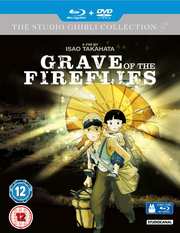





































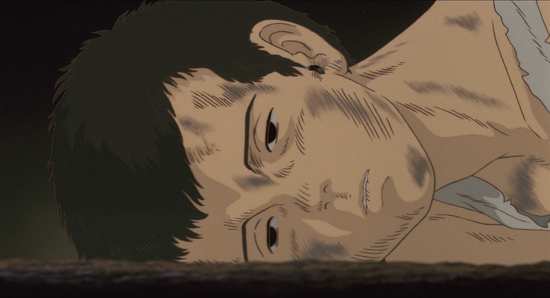
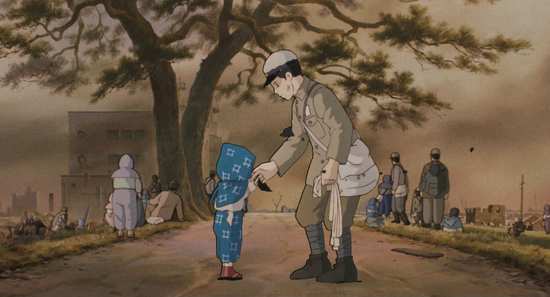
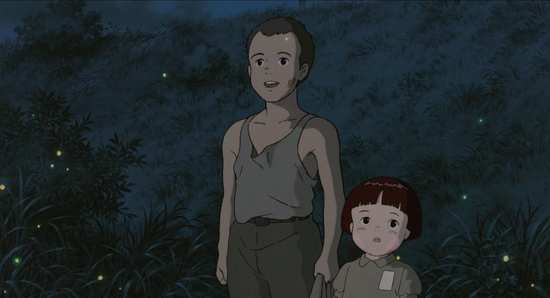
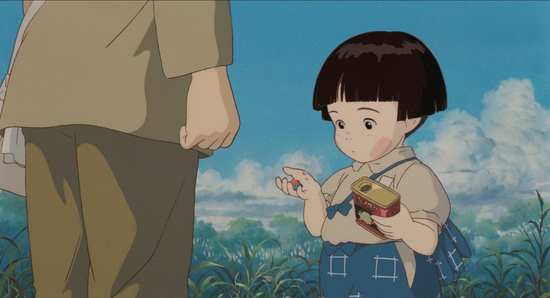


Your Opinions and Comments
Be the first to post a comment!